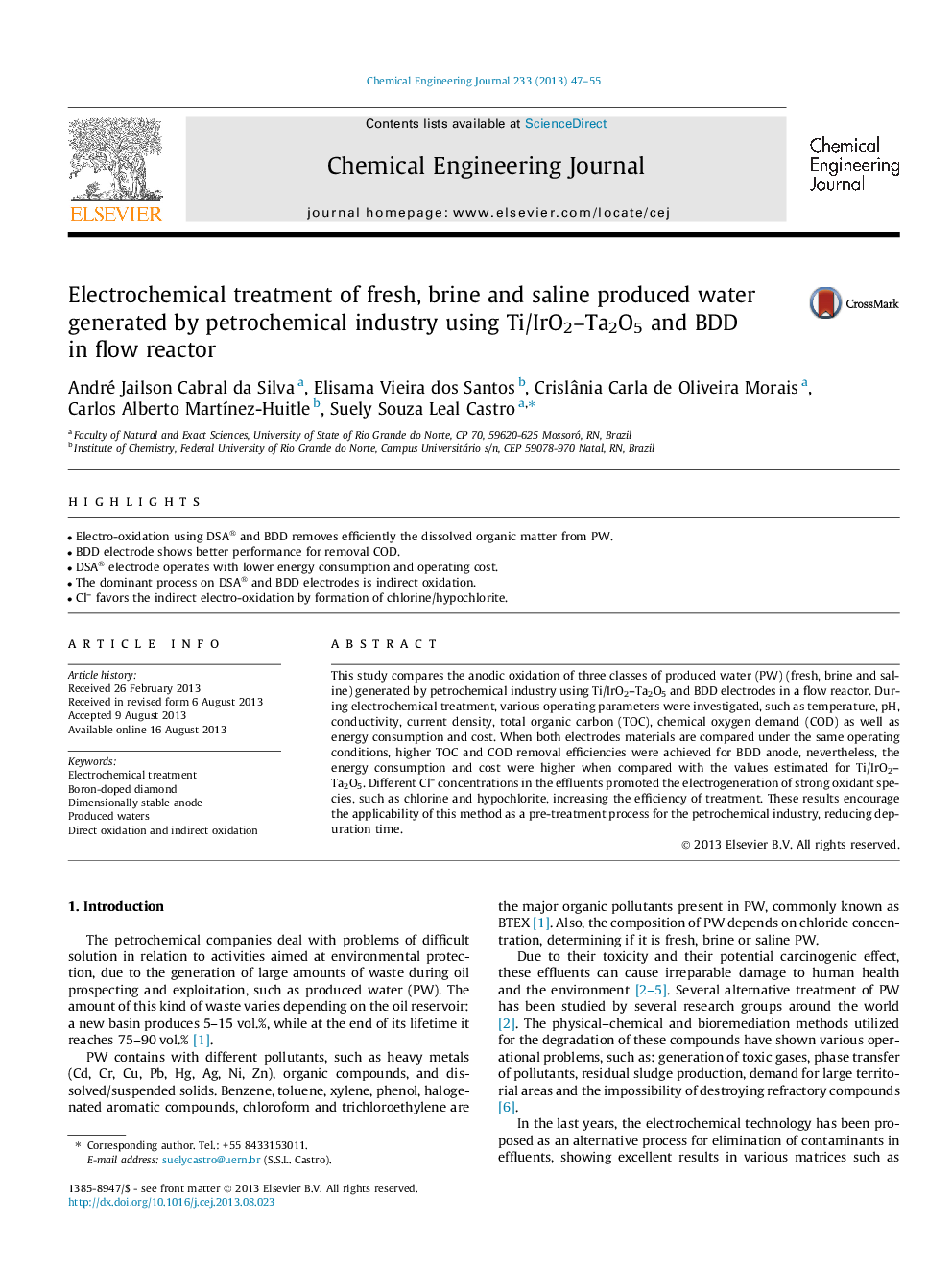| Article ID | Journal | Published Year | Pages | File Type |
|---|---|---|---|---|
| 6586647 | Chemical Engineering Journal | 2013 | 9 Pages |
Abstract
This study compares the anodic oxidation of three classes of produced water (PW) (fresh, brine and saline) generated by petrochemical industry using Ti/IrO2-Ta2O5 and BDD electrodes in a flow reactor. During electrochemical treatment, various operating parameters were investigated, such as temperature, pH, conductivity, current density, total organic carbon (TOC), chemical oxygen demand (COD) as well as energy consumption and cost. When both electrodes materials are compared under the same operating conditions, higher TOC and COD removal efficiencies were achieved for BDD anode, nevertheless, the energy consumption and cost were higher when compared with the values estimated for Ti/IrO2-Ta2O5. Different Cl- concentrations in the effluents promoted the electrogeneration of strong oxidant species, such as chlorine and hypochlorite, increasing the efficiency of treatment. These results encourage the applicability of this method as a pre-treatment process for the petrochemical industry, reducing depuration time.
Related Topics
Physical Sciences and Engineering
Chemical Engineering
Chemical Engineering (General)
Authors
André Jailson Cabral da Silva, Elisama Vieira dos Santos, Crislânia Carla de Oliveira Morais, Carlos Alberto MartÃnez-Huitle, Suely Souza Leal Castro,
